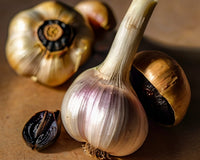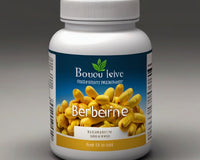Not long ago, your only option for pouring breakfast cereal was whole milk. Nowadays, there are many types of milk: whole milk, 2%, 1%, skim (fat-free) and even lactose-free milk.
For people with dietary or allergy issues, alternatives are also available in place of milk. Almond, soy, rice and coconut "milks" are common plant-based milk alternatives. They are becoming increasingly popular in stores across the United States.
There are other milk alternatives, such as goat milk or oat milk, that may be another good option for some people.
Each type of milk has its advantages and disadvantages, depending on a person's diet, health, nutritional needs or personal taste preferences.
For example, some people may be allergic to milk and may need to choose plant-based milk.
Also, those who may need to increase their calorie and nutrient intake may choose whole milk, which is a concentrated source of protein, fat, and calories.
However, milks such as whole milk and full-fat coconut milk are high in fat and calories, which you should be aware of if you're after a lower-calorie drink. Whole milk contains more calories and saturated fat than any other cow's milk, except goat's milk.
View the differences between these popular types of milk to determine which milk is best for your needs. As with all varieties, choose the unsweetened version. Milk and milk substitutes can be high in sugar if they have added sugar.
Milk and milk alternatives: Nutritional comparison per 8 fluid ounces (~237mL)
(Quantities are estimates and may vary by brand and product)
| Calories | Carbohydrates | Sugar | Fat | Protein | |
| Milk (whole fat) | 150 | 12 grams | 12 grams | 8 grams | 8 grams |
| Milk (1%) | 110 | 12 grams | 12 grams | 2 grams | 8 grams |
| Milk (skim) | 80 | 12 grams | 12 grams | 0g | 8 grams |
| Almond milk (no sugar added) | 40 | 1g | 0g | 3 grams | 2 grams |
| Soy milk (no sugar added) | 80 | 4 grams | 1g | 4 grams | 7 grams |
| Rice milk (no sugar added) | 120 | 22 grams | 10g | 2 grams | 0g |
| Coconut milk drink (no sugar added) | 50 | 2 grams | 0g | 5 grams | 0g |
Milk
Whole milk has the highest fat content of all types of milk. One cup contains the following:
- 150 calories
- 12 grams of carbohydrates in the form of lactose (milk sugar)
- 8 grams of fat
- 8 grams of protein
None of the milk's natural ingredients have been removed. As you can see, whole milk is naturally rich in protein, fat, and calcium. Milk sold in the United States is usually fortified with vitamin A and vitamin D.
Other milks contain the same amount of carbohydrates and protein with some or all of the fat removed. A cup of whole milk has 150 calories, while 1% milk has only 110 calories and skim milk has only 80 calories.
Skim milk has significantly fewer calories than whole milk. However, removing fat reduces the amount of certain nutrients in milk, including vitamins E and K.
Processing lactose-free milk breaks down lactose, the natural sugar in dairy products.
Lactose-free milk is also a good source of protein, calcium, vitamins and minerals. Lactose-free milk varies in total fat and saturated fat content, with 2%, 1% and fat-free varieties respectively.
Advantages of milk
- Whole milk provides essential protein, extra calories from fat, and vitamins and minerals.
- Lactose-free versions are available for those with lactose allergies.
- Milk, both grass-fed and low-calorie pasteurized, is readily available at grocery and convenience stores.
Disadvantages of milk
- Whole milk is high in calories and fat.
- Many people cannot tolerate lactose, the sugar in milk.
- Some people have ethical concerns about modern dairy farming practices.
Almond milk

Almond milk is made from almond flour and filtered water. It may also contain starches and thickeners to improve its consistency and shelf life.
People with allergies to almonds or tree nuts should avoid almond milk.
As long as there is no added sugar, almond milk is generally lower in calories than other milks. It also contains no saturated fat and is naturally lactose-free.
Each cup of No Added Sugar Almond Milk has:
- About 30 to 60 calories
- 1 gram of carbohydrates (more varieties of added sugars)
- 3 grams of fat
- 1g protein
Even though almonds are a good source of protein, almond milk is not. Almond milk is also not a good source of calcium. However, many brands of almond milk are fortified with calcium, vitamin A, and vitamin D.
Advantages of almond milk
- It is low in calories.
- It is often fortified, with added calcium, and is a good source of vitamin A and vitamin D.
- It is vegan and naturally lactose-free.
Disadvantages of almond milk
- It is not a good source of protein.
- It may contain carrageenan (carrageenan), which may cause digestive problems in some people.
- There are some environmental concerns with the amount of water used to grow almonds.
Soy milk

Soy milk is made from soybeans and filtered water. Like other plant-based milk alternatives, it may contain thickeners to improve consistency and shelf life.
A cup of soy milk without added sugar contains:
- About 80 to 100 calories
- 4 grams of carbohydrates (more varieties of added sugars)
- 4 grams of fat
- 7 grams of protein
Because soy milk is derived from plants, it is naturally cholesterol-free and low in saturated fat. It's also lactose-free.
Soybeans and soy milk are good sources of protein, calcium (when fortified) and potassium.
Advantages of soy milk
- It is a good source of potassium and supplements vitamins A, B-12 and D as well as calcium.
- It contains as much protein as cow's milk but fewer calories than whole milk, about equal to 1% or 2% of the calories in cow's milk.
- It contains very little saturated fat.
Disadvantages of soy milk
- Soy is a common allergen in adults and children.
- Most soybeans produced in the United States come from genetically modified plants, which is a concern for some.
Rice milk

Rice milk is made from rice flour and water. Like other alternative milks, it often contains additives to improve consistency and shelf stability.
Of all dairy products, they are the least likely to cause allergies. This is a great option for people who are lactose intolerant or allergic to milk, soy, or nuts.
Rice milk contains the most carbohydrates per cup and provides:
- 120 calories
- 22 grams of carbohydrates
- 2 grams of fat
- Small amount of protein (less than 1 gram)
While rice milk can be fortified with calcium and vitamin D, these are not natural sources, like soy milk and almond milk. Rice also shows higher levels of inorganic arsenic.
The Food and Drug Administration (FDATrusted Source) recommends not relying solely on rice and rice products, especially for infants, children, and pregnant women.
The American Academy of Pediatrics has taken a similar stance, suggesting focusing on a variety of foods and avoiding reliance on just rice or rice products.
Advantages of rice milk
- It is the least allergenic of the milk alternatives.
- It can be fortified as a good source of calcium, vitamin A and vitamin D.
- Rice milk is naturally sweeter than other milk alternatives.
Disadvantages of rice milk
- It is high in carbohydrates, making it the last choice for diabetics.
- It is not a good source of protein.
- Consumption of rice products may pose health risks to infants and children due to high levels of inorganic arsenic.
Coconut milk

Coconut milk is made from filtered water and coconut milk, which is made from grated mature coconut meat. Despite its name, coconut is not actually a nut, so people with nut allergies should be safe to eat it.
Coconut milk is more accurately called a "coconut milk drink" because it is thinner than the coconut milk typically used in canning for cooking.
Like other plant-based milk alternatives, coconut milk often contains added thickeners and other ingredients.
Coconut milk contains more fat than other milk alternatives. Each cup of coconut milk drink with no added sugar contains:
- About 50 calories
- 2 grams of carbohydrates
- 5g fat
- 0g protein
Coconut milk drinks naturally contain no calcium, vitamin A or vitamin D. However, it can be fortified with these nutrients.














